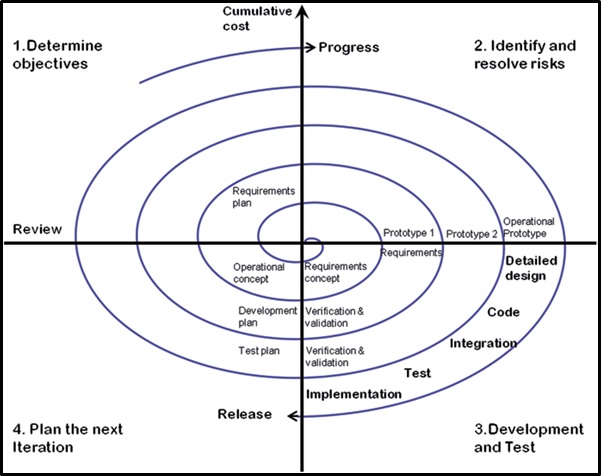Home »
Software Engineering
Spiral Model in SDLC
In this tutorial, we will learn about the spiral model in software life cycle model (SDLC).
By Monika Sharma Last updated : April 05, 2023
What is Spiral Model in SDLC?
The spiral model overcomes almost every drawback of the other software lifecycle models. However, it has some of its drawbacks too. First, let us understand what a Spiral model is?
The spiral model can be thought as of a model that has the capability of handling the maximum amount of risks that may occur while developing any software. This model holds the components of almost every other software lifecycle model, i.e. the waterfall models, the prototyping model, the iterative model, the evolutionary model, etc. Due to this, this model is able to handle almost every kind of risk that other models usually fail to handle. However, due to so many components, this model is much more complex than the other software lifecycle models.
Spiral Model Phases
As the name suggests, the spiral model appears as a spiral shape in which the different phases of the model are distributed in different loops. The number of loops in the model is not fixed and may vary. Each loop performs a set of specific activities. In general, the following activities are carried out in different loops of the spiral model:

Image source: The spiral model
Fig. The spiral model: A type of software lifecycle model
Spiral Model Phases Quadrants
As it can also be seen in the diagram, the spiral model is divided into four major quadrants. Therefore, apart from the loop divisions, the spiral model is also divided into quadrants which further divide and categorize these loops and each of these divisions contains a set of activities that are performed while the software development. Each of the quadrants of the spiral model performs the following functions:
1) First Quadrant
Sets the objective of the software and analyses all the risks associated with the software.
2) Second Quadrant
This quadrant deals with the complete analysis of each of the risks analyzed in the first quadrant. Apart from that, the risk reduction is also taken care of here.
3) Third Quadrant
This quadrant includes all the development and validation part which includes coding, testing, and other stuff.
4) Fourth Quadrant
The fourth quadrant deals with the final results that we are getting from the software. It involves the review, planning, and maintenance of the software.
Advertisement
Advertisement